How to Create a Business Wiki for Your Company
Learn why a business wiki is one of the easiest ways to share and organize internal company information.
Your team members accumulate a wealth of valuable information over time – best practices, processes, policies, industry knowledge, and so on. The problem at many companies is that this information often remains undocumented. Instead, it gets spread across Slack, archived email threads, and disconnected docs.
As a result, your employees — new hires, in particular — have to waste hours tapping on shoulders and asking repetitive questions. McKinsey found that on average, "employees spend 9.3 hours per week searching and gathering information". That essentially means that if you had five full-time employees, only four would show up to work.
But it doesn't have to be this way, and a proper knowledge sharing tool, such as a business wiki, can make a big difference in your team's productivity.
- What is a business wiki?
- Why your company needs a business wiki
- How to create a wiki for your business
What is a business wiki?
A business wiki is a central repository for all your company knowledge — like an internal Wikipedia for your business. It's also often referred to as an enterprise wiki, a company wiki, or an internal knowledge base. p Learn more about the differences between a knowledge base and a wiki: Wiki vs knowledge base.
Here is an example of a business wiki created in Nuclino, a unified workspace where teams can bring all their knowledge, docs, and projects together in one place.
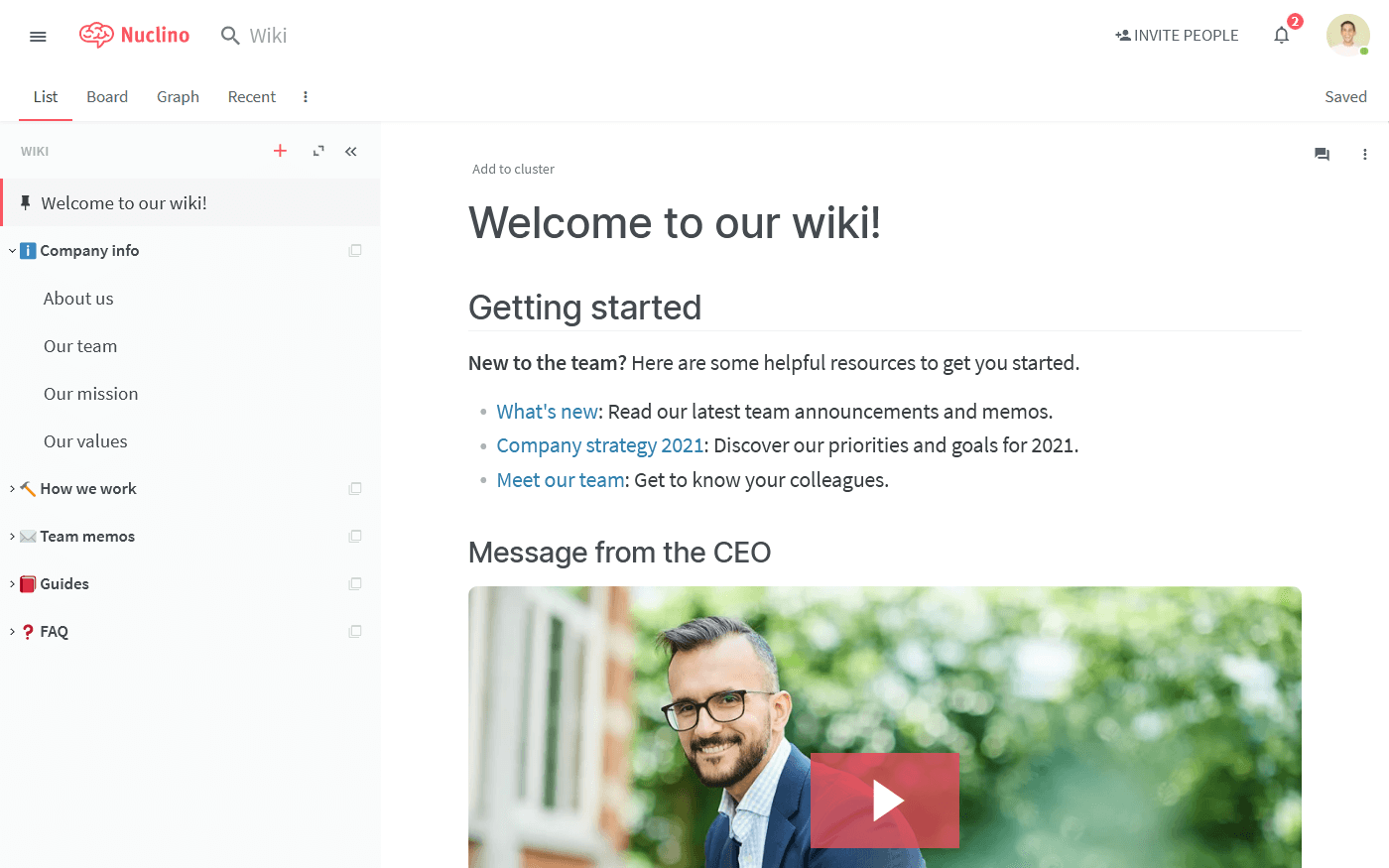
A business wiki can include a wide variety of information, including process documentation, HR policies, employee handbooks, employee training materials, onboarding checklists, and more. This content is usually crowdsourced. The entire team collaboratively extends, reviews, and updates the information in the business wiki, turning it into a single source of truth for all important topics.
Why your company needs a business wiki
Creating a business wiki from scratch may sound like a tedious and time-consuming task. Spoiler alert: It doesn't need to be.
But before we get into how you can build a wiki for your business, it's important to understand why it's a worthwhile investment. Here are just some of the benefits you can reap by having a business wiki.
New employees get up to speed faster
Starting a new job is always stressful for new employees. Even experienced professionals need time to make themselves familiar with the tools, processes, and policies of their new workplace. For entry-level employees, the onboarding process tends to be even more challenging and lengthy. Not knowing what to do, how to do it, or who to ask for help can render them unproductive for weeks.
A business wiki is a great way to get new employees up to speed faster, because it gives them easy access to all your internal company knowledge. How do we handle refund requests from customers? Where can I find our brand guidelines? What is our process for SEO split testing on the website? How can I improve the delivery rate of our email campaigns using DMARC reports? A business wiki can put all answers at your employees' fingertips, helping them ramp up their productivity faster.
Less time is spent searching for information
When information is scattered across tools and folders, finding what you need can eat up a good chunk of your day. And time is money. Studies suggest that Fortune 500 companies lose a combined $31.5 billion per year from failing to manage knowledge effectively.
A business wiki is a tool designed to be your employees' first stop when it comes to looking for information, potentially saving them hours every week.
Many modern wiki tools like Nuclino also offer AI-powered alternatives to regular search. You can simply ask a question and get an answer instantly drawn from your team's collective knowledge documented in the wiki.
Company knowledge gets retained
Your long-time team members accumulate a ton of valuable knowledge over the course of their careers. But even the happiest employees eventually leave or retire. And when they do, they take their knowledge with them, leaving their replacements to "reinvent the wheel" and build up their know-how from scratch.
Having a business wiki ensures that as employees come and go, company knowledge gets retained.
How to create a wiki for your business
Step 1: Select the right business wiki software
In the past, companies had to choose between setting up a complex and unintuitive business wiki using platforms like MediaWiki or tools like SharePoint, or having to hunt through folders in their Google Drive to find what they are looking for.
Fortunately, wiki software has come a long way since then, and there are many user-friendly solutions you can choose from. Here are some important qualities to look for in a great business wiki:
Fast and reliable search.
Intuitive navigation and content hierarchy.
Easy-to-use content editor.
Simple access management.
Internal linking between pages.
Integrations with other tools to keep all your content in sync.
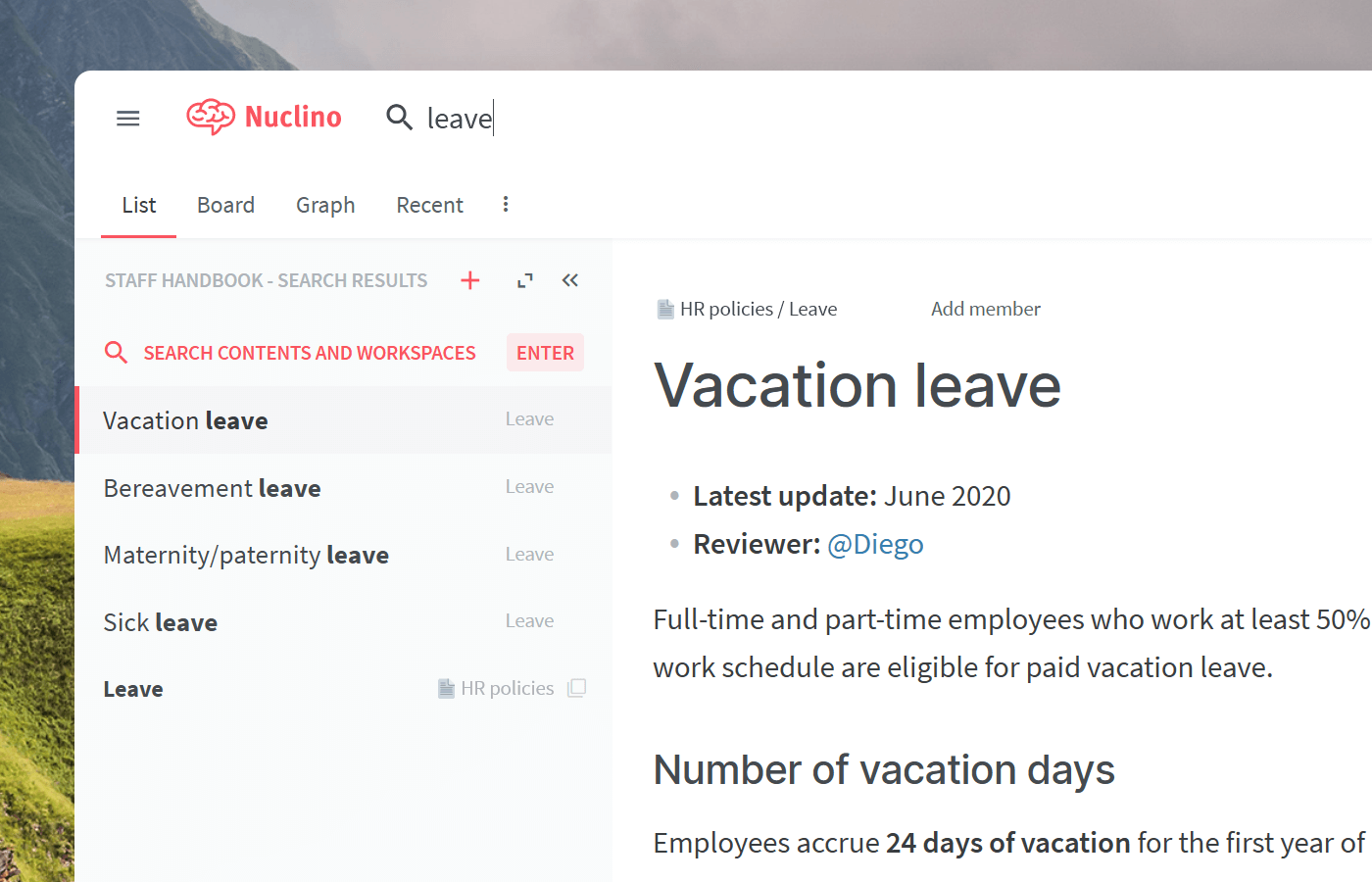
One such tool is Nuclino. Unlike traditional wiki platforms and intranet portals, with Nuclino there's nothing to install or configure, it works right out of the box. Simply create an account to get started.
While Nuclino can be used exclusively as a business wiki, it's a unified workspace where you can manage projects, onboard new employees, take meeting minutes, collaborate on documents, and bring all your team's work together in one place.
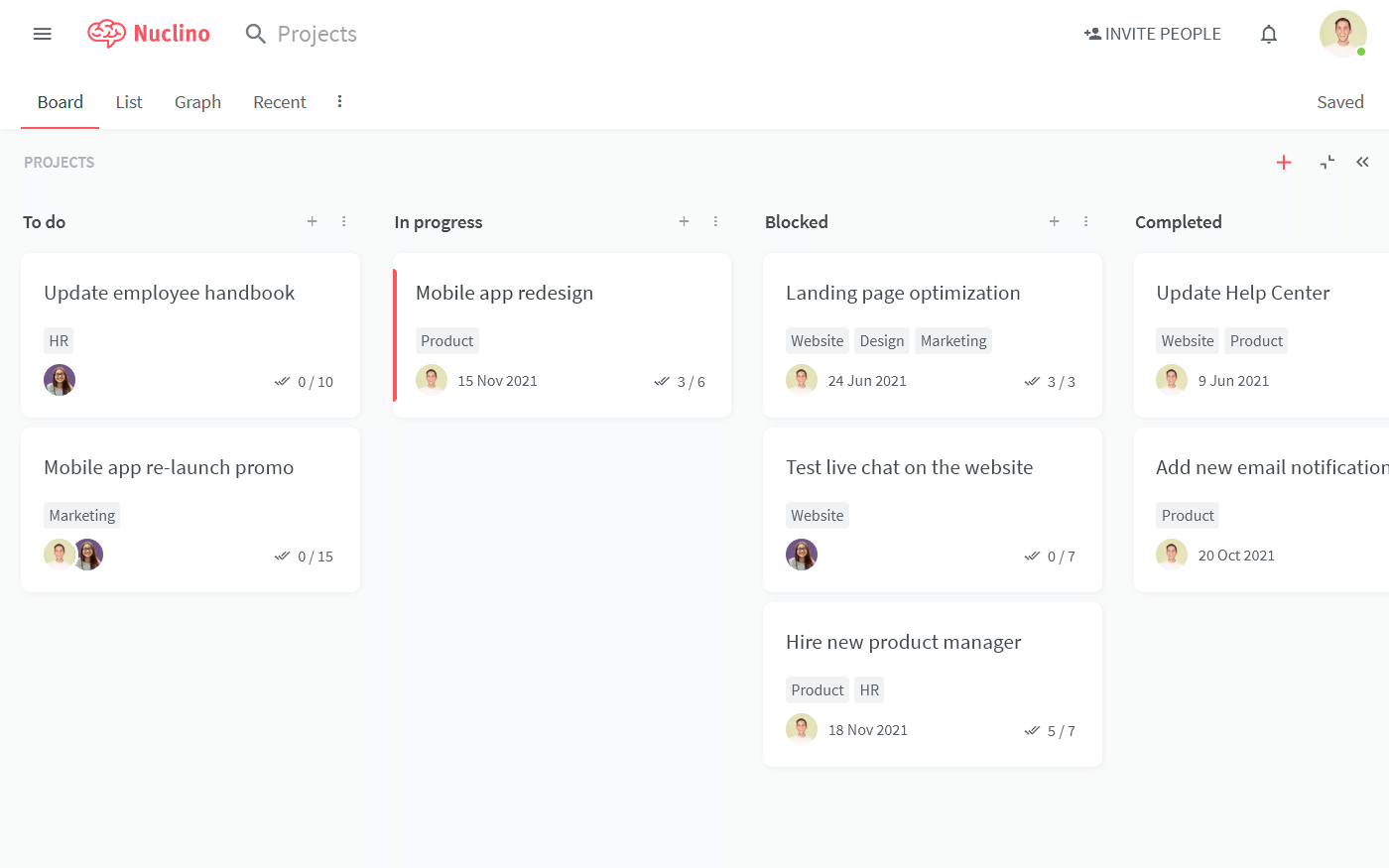
Step 2: Import or create content
If you are switching from another business wiki software, such as Confluence (or one of many Confluence alternatives), you can easily import your content directly into Nuclino.
If you are starting from scratch, don't fret. Populating an empty wiki with content may sound like an intimidating task, but with the right approach, it can be easier than it seems.
Start with the basic structure by picking a few easy topics you are familiar with. In Nuclino, you can create a dedicated workspace for each high-level topic or department, for example, Engineering, Customer Support, HR, and so on. Don't try to cover everything yourself — involve your entire team early on and encourage them to contribute.
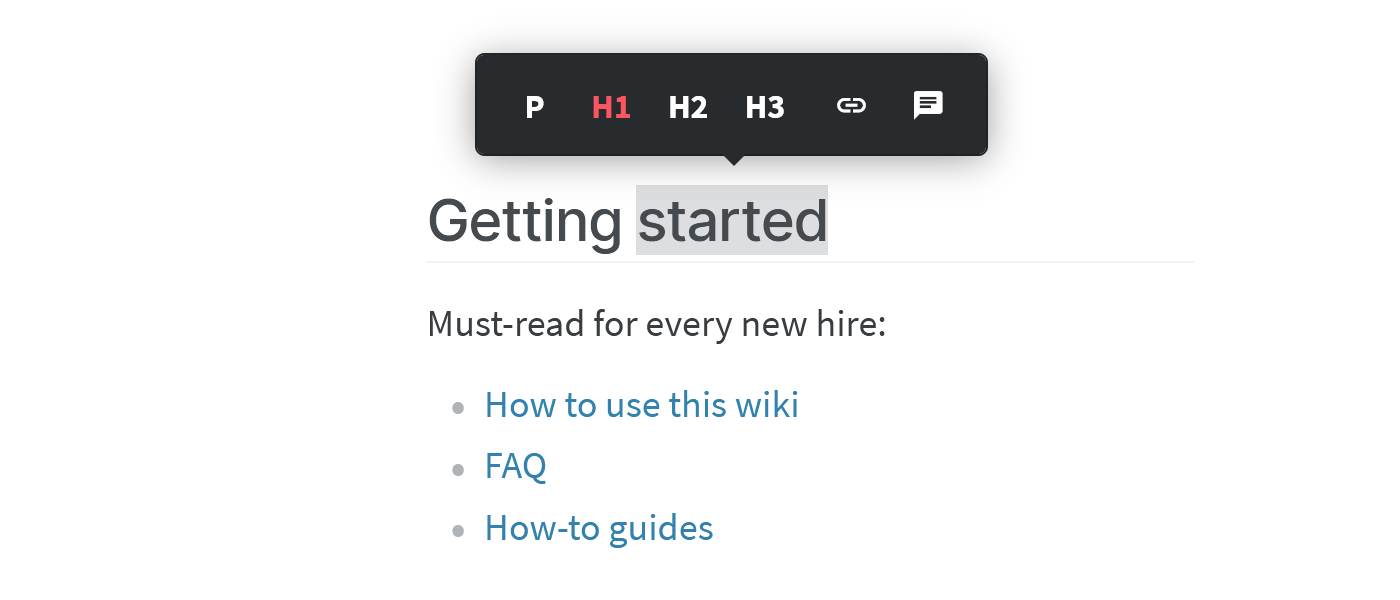
Step 3: Link related pages together
One of the core features of any wiki, including Wikipedia, is internal linking. Internal links define the structure of your wiki and make it possible to explore it in an intuitive and natural way — like a website, rather than a list of docs and folders.
In Nuclino, linking pages together is as easy as typing an "@" and the title of the page you'd like to link to.
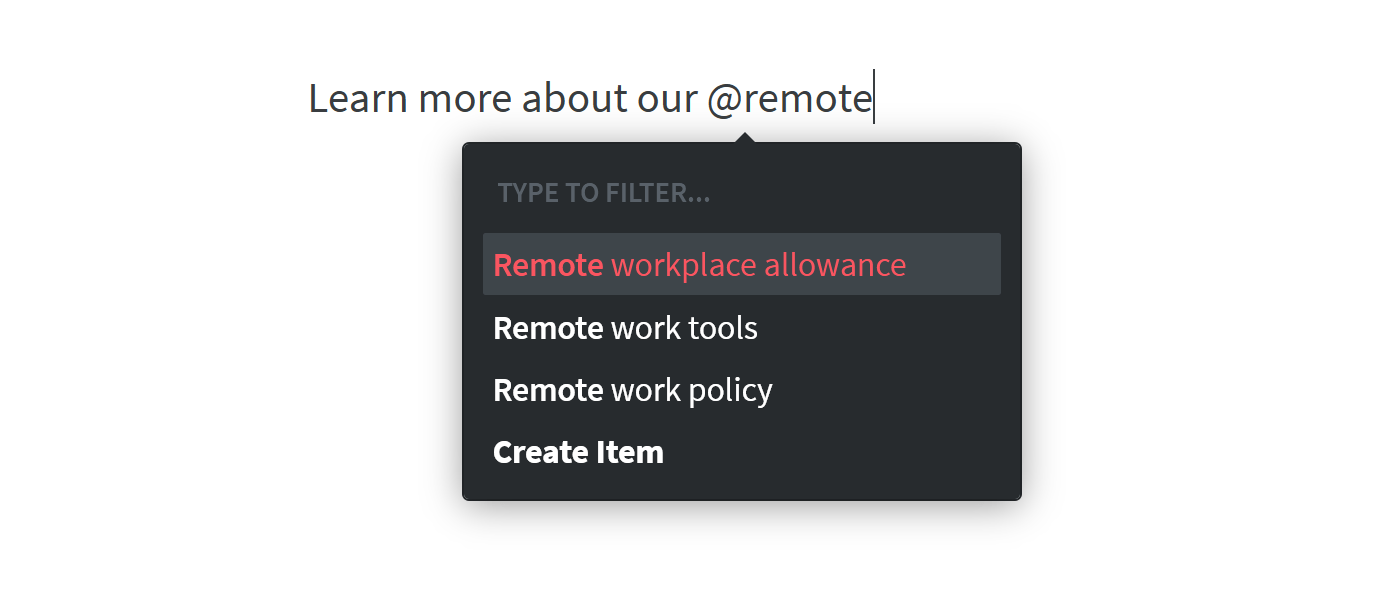
If you want to get a quick overview of all the interconnected pages of your business wiki, you can use the Graph view. It works like an interactive mind map for all the topics documented in your wiki.
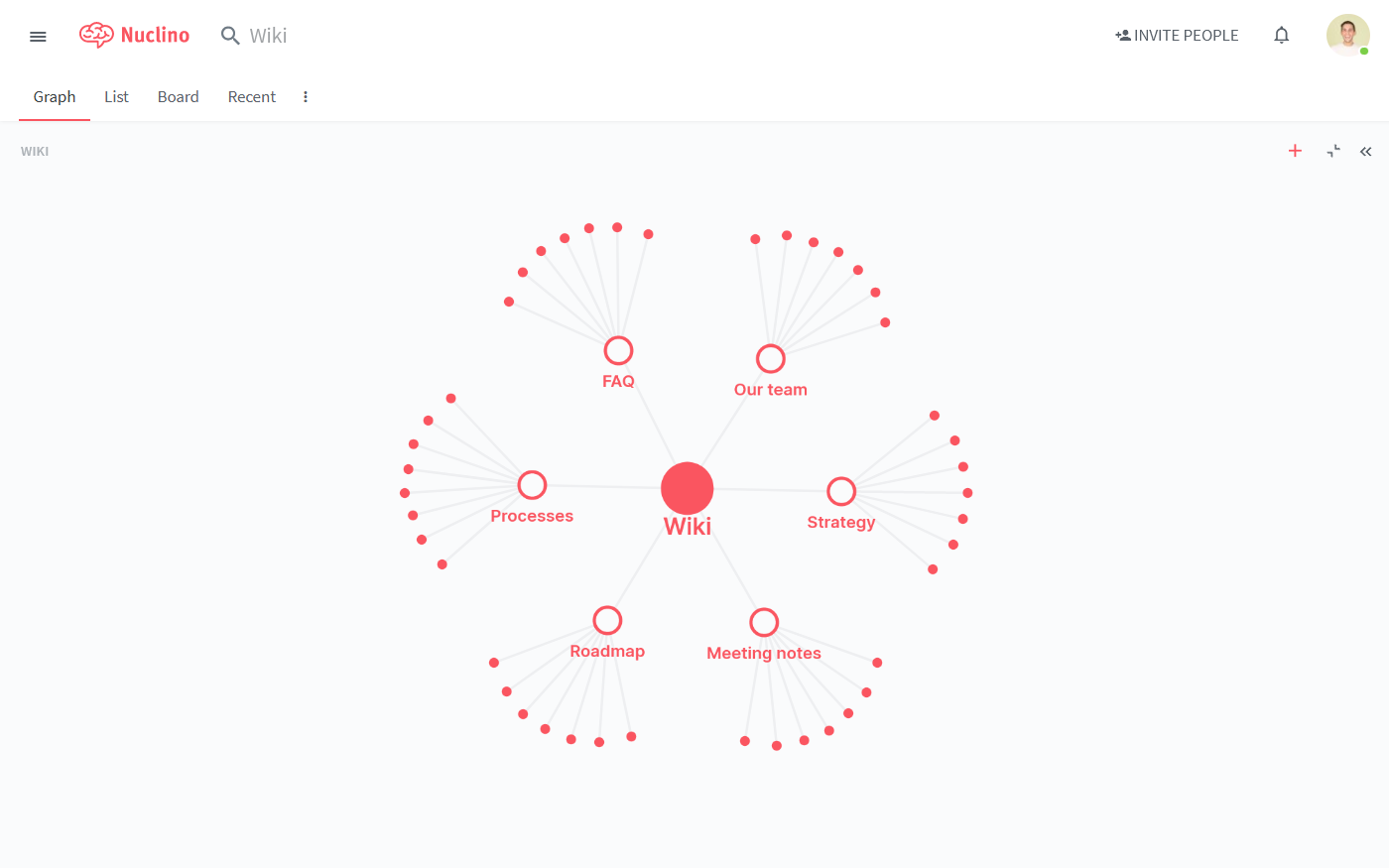
Step 4: Configure access rights
Wikis are collaborative by design. A business wiki is typically collectively maintained by multiple employees, or even the entire company.
But there are exceptions. Your wiki may contain some confidential content, such as performance reviews, that should only be accessible to specific team members. Other information shouldn't be edited without authorization, such as brand guidelines.
Depending on the wiki software you choose, user roles and permissions can be fairly basic or highly granular. But in most cases, there are several fundamental decisions you will need to make:
Which information should be shared with everyone and which should be private?
Which team members should be able to edit the content in your wiki?
Which team members should have access to account settings and billing?

Step 5: Get your team on board
A business wiki can only serve its purpose under two conditions:
It contains accurate and helpful information that gets updated on a regular basis.
Your team members are willing (and able) to use it to quickly retrieve this information when they need it.
But this often doesn't happen, and many wikis suffer from low engagement. This leads to a vicious circle: the editors don't feel that it's worth their time to properly document stuff since no one's going to read the wiki anyway, and readers never bother using the wiki since the content is always incomplete or of low quality. Such wikis inevitably get abandoned.
The underlying problem is often the confusing, slow, and frustrating user experience. If editing or searching for information is too tedious, people aren't going to bother. This is why choosing a tool that is easy-to-use and intuitive is so important when it comes to business wikis.
If your team has never used a wiki before, you may also need to invest time into communicating its value to your colleagues and provide some guidance on how to get the most out of it. More often than not, documentation is seen as a boring and tedious chore. Without clear incentives, your team is unlikely to change their habits and start actively contributing.
Create a welcome page for new members with some tips on how to use the wiki and where to find what. Make updating the wiki a team KPI. Reward the most active wiki contributors. Get the ball rolling, and the rest of your team will follow.
Ready to get started?
